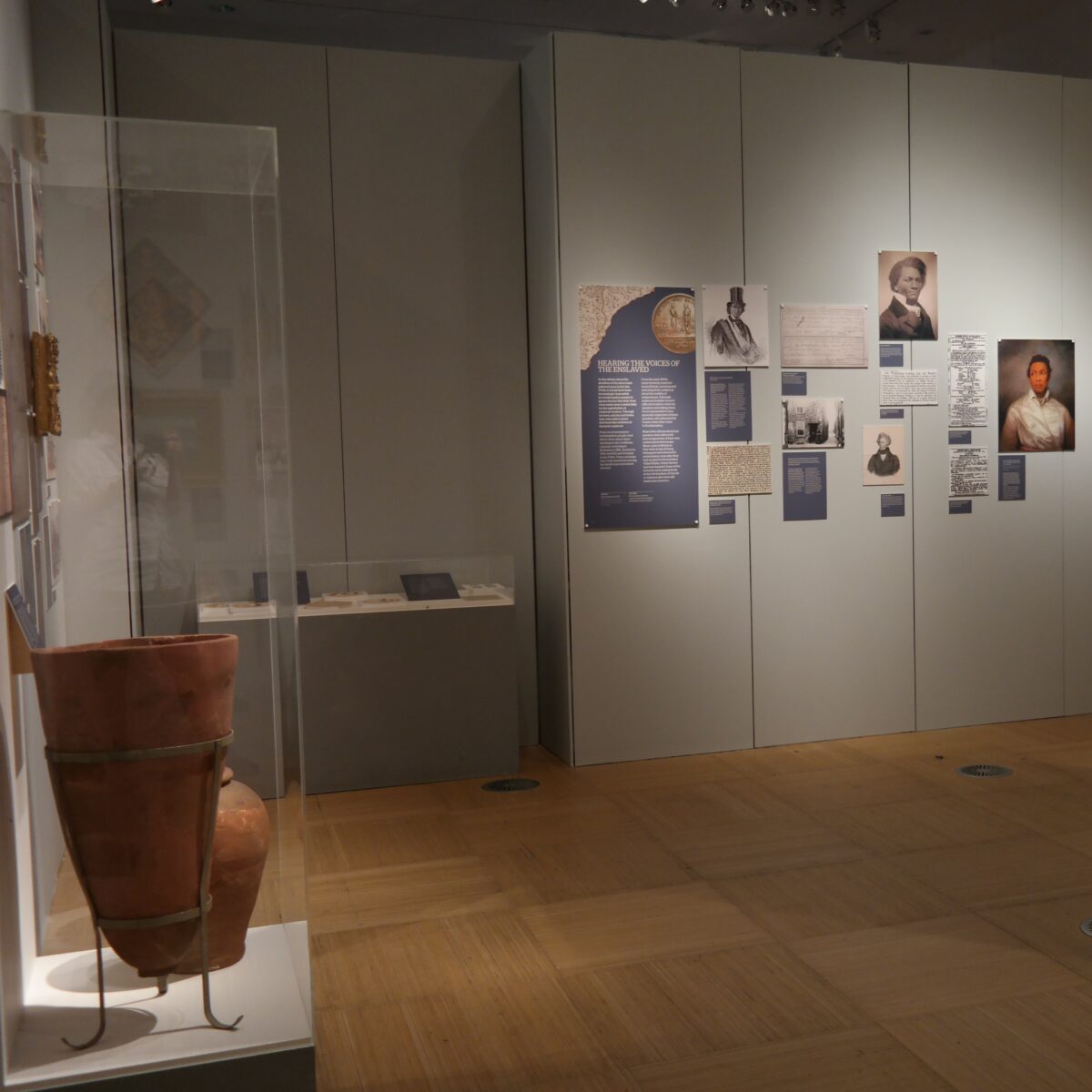by Liz Batten.
Sometime just before the pandemic I’d offered to help do some research for an exhibition on slavery and Southampton, Sugar, Politics and Money for SeaCity Museum. I’d already been excited by David Olusoga’s documentaries on BBC TV, and the publicity surrounding the University College London database of slave compensation payouts. Back then I’d looked up the payments to people in Southampton in the late 1830s who were being persuaded to give up owning people in the West Indies. Little did I know what an education I was about to get.
The name in the Southampton list that caught my eye was Abel Rous Dottin of Bugle Hall, Southampton. He was one of our MPs (twice) and owned plantations on Barbados. His family had been amongst the earliest migrants in the 1600s and had become rich growing and exporting sugar. I got an insight into the brutality of this system when I read “Sugar in the Blood” by Andrea Stuart and an introduction to how come the white English plantation owners had black descendants.
Looking at Dottin’s political career led to the discovery that from the 1740s to the 1840s Southampton had MPs who were West Indies slave owners and formed part of a powerful group in Parliament (the West India interest) who opposed abolition and tried to persuade everyone that our economy would not survive without slave ownership. At this point I read Eric Williams’ book “Capitalism and Slavery” and realized how the exploitation of the West Indies (and other colonies) and the “othering” and terrible abuse of black African enslaved people was the foundation of the way we live today. It was the decision to discard “indentured” white labour and buy black African enslaved people that was the solution found by the white settlers in order to make more profit, because enslaved people weren’t paid and couldn’t leave. It was a method of maximum extraction of profit at the cost of the workers’ health and lives, leading to a view of commerce, trade and profit that stays with us to this day.
From these decisions arose the racism that spread around the globe and the sharp rise in extractive capitalism, and colonialism, resulting in the Industrial Revolution and the slave compensation payouts accelerating investment in infrastructure, such as the railways, in the UK. Which brings me back to Dottin. He was the Chairman of the London and Greenwich Railway, right at the beginning of rail infrastructure in the 1830s, and was part of subsequent companies that brought the railway from Greenwich to Northam. At that point there was a desire to extend the railway westwards from Southampton but passenger numbers alone didn’t result in sufficient profit.
Dottin and colleagues had the bright idea of building an industrial port in Southampton which would capture some of the West Indies trade, because ships going along the Channel to reach the West India dock in London were sometimes held up for days in bad conditions. Southampton could also take two visits per annum per ship whereas London could only take one. This swung the decision for investors and the whole idea was sanctioned by Parliament. The railway and the docks (where Ocean Village now stands) were built almost simultaneously in the 1840s/1850s.
I am so grateful that I had this chance to learn about some of the history of slavery and Southampton – there is a lot more to see in the exhibition itself. This is just a snapshot of the small contribution I made. My early education was typical, I guess, of the standard view of the British as colonisers and I now know a whole lot more about the real cost of that, and the painful and lethal cost of that to so many. I’ve also recognized that the world view that was created back then is still powerfully with us, and is – as capitalism – the source of so much damage to our relationships with each other and to the planet. I can see another exhibition possibly joining up these links with the past to the ways it plays out today – especially in terms of social justice, the global south and extractive capitalism and Southampton’s role as a “sacrifice zone” in all of that. For me, there is a direct link between this history and the difficulty we are having adapting our systems to take care of, rather than exploit, the planet and its people.
Footnote:
The exhibition was put together by a group of volunteers who met intermittently throughout the pandemic and under the supervision of Dr Maria Newbery, Curator of Maritime & Local Collections, SCC. We all chose for ourselves what we would focus on and the exhibition is intended to be a starting point for further conversations and work on uncovering Southampton’s history as it relates to slavery. Each volunteer has contributed a story which might be new to you. Go along and see for yourself. The entry fee for this section of the Museum (Southampton Stories) is lower than for admittance to the whole building.
For more information, visit :Southampton Stories | SeaCity Museum
My thanks to Christine Walker for many conversations about Eric Williams and his book “Capitalism and Slavery”
- In Common is not for profit. We rely on donations from readers to keep the site running. Could you help to support us for as little as 25p a week? Please help us to carry on offering independent grass roots media. Visit: https://www.patreon.com/incommonsoton
.

